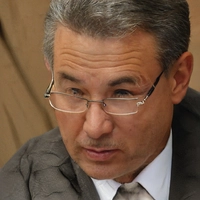
In the realm of education, teacher training schools hold a special place. These institutions have a rich history and have been known by various names over the years. If you've ever wondered what a teacher training school is also called, you're in for an enlightening journey.
Traditionally, these schools were referred to as 'normal schools', a term that originated in early 19th century Europe. Their role was to standardize teacher education, setting a norm for pedagogy that could be replicated widely. Another common name is 'teacher colleges', which reflects the comprehensive training they offer to aspiring educators.
Beyond the names, these institutions are crucial in shaping future teachers, offering a blend of theory and practice that prepares them for the nuanced demands of the profession. Whether aiming to teach young children or adults, prospective teachers find the curriculum in these schools tailored to fit diverse educational needs.
- Historical Names and Evolution
- Educational Pathways and Curriculum
- Significance of Teacher Training Schools
- How to Choose the Right Teacher Training School
Historical Names and Evolution
The concept of teacher training schools has a deep-rooted history that dates back to the early 19th century. It was during a time when education reformers recognized the importance of having standardized methods for educating teachers. The term 'normal school' was coined from the French 'école normale', which referred to institutions established to train teachers to conduct classes based on a ‘norm’ or a model of teaching. These institutions first appeared in France in the late 18th century and spread across Europe before gaining a foothold in the United States. By the mid-1800s, states like Massachusetts and Vermont were establishing their own normal schools, aiming to create a coherent system where educators could be united under uniform teaching practices.
As educational philosophies evolved, so too did the designations and missions of these schools. In many countries, the normal school designation was gradually phased out in favor of names like 'teacher colleges' or 'educational institutes'. These changes mirrored the broadening scope of teacher education to encompass modern psychological principles and diverse teaching strategies. By the mid-20th century, many normal schools in the United States had either transitioned into or had been absorbed by comprehensive universities, offering diverse majors beyond education. This transformation reflected a societal shift that acknowledged teaching as a subject deserving of extensive academic inquiry and not just practical know-how.
Even though the term 'normal school' is quaintly nostalgic now, its influence still lingers in contemporary teacher training programs. These programs continue to draw from the fundamental idea of setting a pedagogical standard while also incorporating innovative teaching methods to meet new challenges. As educators themselves reflect on these changes, the term has acquired layers of cultural and educational significance. As Jules Henry proclaimed,
"Education itself is an evolving field, with every generation adding its own intelligence to the corpus."Such insightful reflections remind us that while the names may change, the core mission of improving educational standards through teacher training remains a constant pursuit.
Adding to the historical context, teacher training evolved differently across continents, responding to unique cultural and educational needs. For instance, in Germany, the seminary model had its roots and served a similar purpose, focussing significantly on subject matter expertise for secondary education teachers, which contrasts with the more generalist approach of early normal schools in America. Despite regional differences, the shared goal was equipping educators with the skills needed to cultivate future generations, a testament to the global acknowledgment of the transformative power of education.

Educational Pathways and Curriculum
The journey to becoming a teacher is both structured and dynamic, much like the profession itself. Teacher training schools, often called teacher colleges, offer a range of educational pathways to cater to aspiring educators. These pathways typically start with undergraduate programs, where students can earn a Bachelor of Education (B.Ed) degree. This degree provides the foundational knowledge required for teaching and covers areas such as child development, pedagogy, and classroom management.
Alongside these undergraduate programs, many institutions offer postgraduate options for those aiming to specialize or switch into teaching from another profession. The Master of Arts in Teaching (MAT) and the Master of Education (M.Ed) are two common postgraduate routes. These programs delve deeper into educational theory, giving students the tools to tackle complex teaching challenges. The curriculum often involves a mix of coursework and practical experiences, allowing students to transition seamlessly into classroom environments.
"Education is not the filling of a pail, but the lighting of a fire." – William Butler Yeats
It's crucial to note that most teacher training schools emphasize a strong connection between theory and practice. For instance, students might spend part of their education in local schools gaining hands-on experience under the mentorship of seasoned teachers. This blending of classroom learning with real-world exposure helps in building a comprehensive understanding of the teaching landscape. The schools often partner with local educational authorities to ensure their curriculum remains relevant and aligned with current educational standards.
Some institutions might also offer alternative certification programs, which are particularly useful for individuals who decide to pursue teaching as a second career. These programs usually provide the intense, focused training that covers the key aspects of teaching certification in a shorter time frame. They are structured to meet the needs of working professionals, offering flexible schedules that balance coursework and fieldwork. Additionally, many of these programs emphasize culturally responsive teaching strategies, ensuring educators are well-equipped to address the diverse needs of today's classrooms.
In today's digital age, teacher training schools have increasingly integrated technology into their curriculums. Students often learn to use educational technologies that enhance learning experiences, such as interactive whiteboards, learning management systems, and educational software. The focus on tech fluency ensures that educators are prepared to navigate and leverage digital tools effectively, which is a crucial skill as remote and hybrid learning environments become more commonplace.
Ultimately, whether through traditional degree programs or alternative routes, the curriculum in teacher training schools is designed to nurture reflective, informed practitioners ready to meet the demands of the education sector. These education pathways not only shape effective educators but play a significant role in the ongoing evolution of teaching as both a science and an art.

Significance of Teacher Training Schools
Teacher training schools are fundamental in the fabric of our education system, serving as the critical juncture where passion for teaching meets the practicality of pedagogy. Their role in shaping educators cannot be overstated. These institutions are the guardians of teaching quality, the places where budding educators transform their dreams into actionable skills. Within their walls, future teachers not only learn effective methods and strategies but also grasp the underlying psychology and sociology of learning, ensuring they approach teaching with a well-rounded understanding.
The significance of these schools is highlighted by their rigorous curriculums and structured programs, which are designed to prepare educators for real-world classroom scenarios. Many teacher training schools offer specialized programs that address various educational needs, such as special education, early childhood education, or STEM courses. This specialization allows teachers to bring targeted skills and insights to their classrooms, enhancing learning outcomes for students across all grade levels. According to a study by the National Center for Education Statistics, graduates of structured teacher training programs tend to exhibit higher levels of teaching effectiveness in their early years compared to those who enter the classroom via alternative routes.
One cannot overlook the social responsibility that teacher training schools instill in their students. They are more than just centers for learning techniques; they are environments where aspiring teachers learn the profound impact of education on society. Teachers from these institutions often emerge not just as educators, but as advocates for change, equipped with the empathy and expertise needed to cultivate a safe, inclusive, and nurturing environment for all students. In the words of renowned educator Sir Ken Robinson,
“Education is the most powerful weapon which you can use to change the world.”This belief anchors the mission of teacher training schools, as they strive to churn out educators who can inspire and engage.
Moreover, teacher training schools are at the forefront of educational research and innovation. They are the proving grounds for new teaching methods, often piloting initiatives that later become best practices in wider educational contexts. These schools foster an environment of continuous learning and adaptation, where both teachers and students are encouraged to remain curious and open-minded. With the advent of new technologies and methodologies, the role of these institutions in equipping teachers with cutting-edge educational tools is more important than ever.
Finally, the significance of teacher training schools is reflected in the community support they generate. They build networks of teaching professionals who support each other both during their training and throughout their careers. This network creates a robust exchange of ideas and experiences, fostering a collaborative atmosphere that benefits educators and students alike. Such collaboration ensures that best practices are shared and implemented, improving the quality of education across the board. This intrinsic value makes teacher training schools indispensable to the growth and improvement of our education system.

How to Choose the Right Teacher Training School
Deciding where to embark on your journey to become a teacher is a significant step, and choosing the right teacher training school can set the foundation for your future career. It's not just about the school's reputation; you also need to consider how its philosophy aligns with your vision of education. When choosing, you should look at the curriculum to ensure it offers a balance of theoretical knowledge and practical experience, giving you the skills needed to thrive in modern classrooms. Moreover, strong guidance from experienced faculty can make a substantial difference in your development. Check the teacher-student ratio too, as it can impact the level of personal attention you'll receive throughout your studies.
Location is another critical factor that often gets overlooked. Would you prefer an urban environment where you can immerse yourself in diverse teaching scenarios, or does a tranquil, rural setting appeal to your sense of learning? Also, consider the school's connections with other educational institutions and its success in placing graduates. A school with an extensive network can help you secure internships and job placements that enhance your practical learning. Scholarships and financial aid options can also alleviate financial stress, allowing you to focus on what truly matters: becoming a skilled educator.
"The influence of a good teacher can never be erased" is an adage that rings true, highlighting the importance of your choice," notes Linda Darling-Hammond, renowned education researcher.
Accreditation should not be overlooked either, as it signifies that the school meets certain education quality standards. Moreover, you might want to explore the technological resources available at the institution. In a world rapidly moving towards digital learning, having access to cutting-edge teaching aids can give you an edge as an educator prepared to use technology effectively. Don’t forget to inquire about the alumni network. Schools with a robust network provide opportunities for mentorship and lifelong connections. Remember to speak with current students and graduates to get an authentic perspective of the learning environment. This firsthand insight can be invaluable in helping you make an informed decision.
To summarize, consider several key aspects when deciding where to start your teacher training journey. Balance between theory and practice, experienced faculty, location, school reputation, and accreditation are just a few of the factors that will lead you to the right institution. Keep these tips in mind, and you'll be well on your way to choosing a school that aligns with your career aspirations and personal learning preferences.
More Articles

Which Is the Toughest MBA?
If you're eyeing an MBA, you've probably wondered which program would push your limits the most. Different MBAs provide varied challenges, from grueling finance courses to leadership hurdles. Understanding these intricacies can help you decide which program aligns with your career goals and personal resilience. Let's uncover the paths that demand the most grit.

Best Tests for Studying in the USA: Your Guide to Success
Navigating the path to studying in the USA often begins with selecting the right standardized test. The SAT, ACT, and TOEFL are key players in this decision, each catering to different aspects of a student's abilities and language skills. Understanding the nuances of each exam and how they align with your strengths can make all the difference. In this guide, we'll demystify these tests, offering practical tips to boost preparation and performance. Make an informed choice that paves the way for your academic journey in the USA.

Best Coaching for NEET Success: Which to Choose?
Choosing the right coaching for NEET can be a game-changer for aspiring doctors. This article explores various coaching options available, evaluating their success rates, unique features, and student feedback. From online platforms to traditional classroom setups, each method has its own strengths and weaknesses. By assessing your personal learning style and needs, you can determine which coaching offers the best results for you. Dive in to make an informed decision about your NEET preparation.
